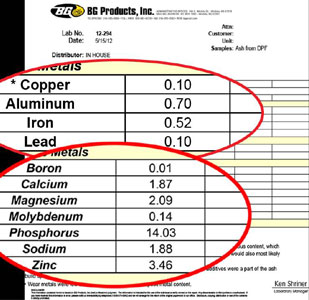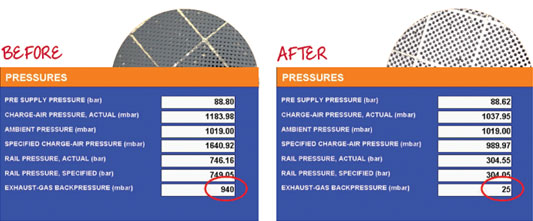
We’re all familiar with the issues of clogged Diesel Particular Filters, and have all seen customers present at our garage with the familiar warning light glowing and/or the engine stuck in ‘limp’ mode.
 The common response to such issues is to ‘clean’ the DPF using one of a number of different processes (removal of a DPF is now illegal, of course). The most popular of these tends to be the use of fuel borne catalyst cleaning solutions (introduced into the fuel tank), or a direct cleaning process (through the use of a specialist off-site cleaning company or an in-situ cleaner).
The common response to such issues is to ‘clean’ the DPF using one of a number of different processes (removal of a DPF is now illegal, of course). The most popular of these tends to be the use of fuel borne catalyst cleaning solutions (introduced into the fuel tank), or a direct cleaning process (through the use of a specialist off-site cleaning company or an in-situ cleaner).
These cleaning methods can often be effective but they still leave the question: ‘Why did the DPF clog up in the first place?’ If we only clean the DPF then we’re only ‘curing’ the problem on a temporary basis. Research by BG Products and DPF OEMs has confirmed that DPF clogging (and the EGR for that matter) is because of over-production of soot – usually caused by poor combustion. What is less well understood is that evaporated oil slipping past the piston rings into the combustion chamber is being deposited on the substrate of the DPF.
These oil deposits can be particularly damaging to the DPF as oil leaves behind metallic elements that coat the DPF and shorten its life (see lab analysis showing metal content in ash, pictured right).
Because of these issues, BG Products takes the view that cleaning a DPF without cleaning and restoring the upstream functions of the engine – such as restoring piston ring function and injector spray patterns – is like having a heart transplant without changing your diet – the DPF problem will return and other problems are looming (EGR, loss of power and economy).

Soot production is a ‘chicken and egg’ scenario. Soot, a natural by-product of combustion, increases if combustion quality is poor. Poor combustion produces more soot, more soot means the DPF has to work harder and/or more often to process that soot. This has a major impact on MPG as the DPF has to work harder and more often.
However, this is not the only impact of soot on the engine. Soot, when produced, gets carried by tiny amounts of fuel down into the oil. Here it gets transported around the engine by the oil (not too healthy for the engine as soot is abrasive) and it, and the degraded oil it encourages, gets deposited in and around the piston rings. This in turn leads to interference with the ring function and their ability to flex and centre. The result is a two-way ‘leak’.
Evaporated oil is able to seep past the rings and combust in the combustion chamber, while the resultant ash gets deposited onto the substrate of the DPF, lowering its efficiency. There is also a leak back the other way, however, as the compression of the engine is compromised and consequently there is a lack of quality combustion, leading to even more soot.









